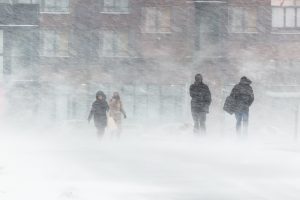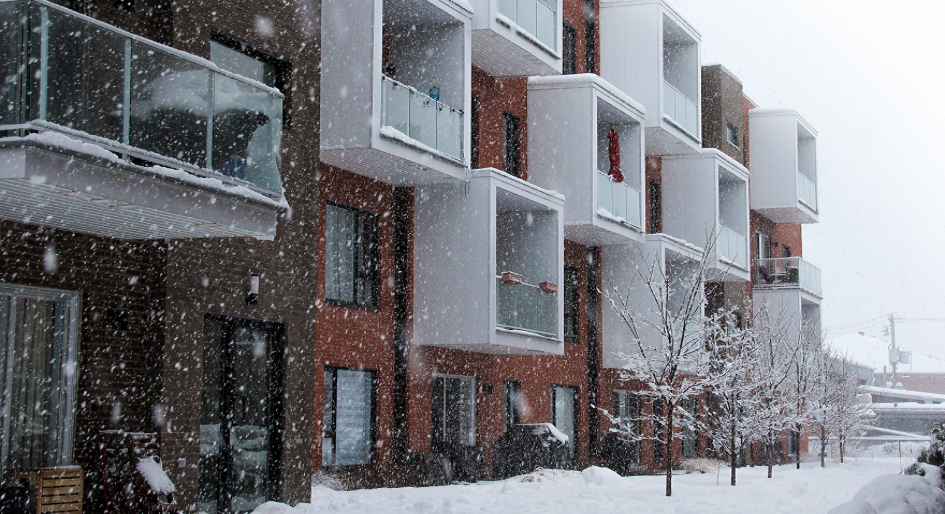Canadian winters can be harsh on condo buildings. Severe storms, heavy snow, and excess ice or water damage risks are only some of the cold-weather hazards that can impact building envelopes, roofs, and critical equipment.
The good news is property stakeholders are far from defenseless. By identifying and addressing potential winter risks, managers and owners can take preventative measures to protect their assets and keep tenants safe and comfortable.
Assess your vulnerabilities: Knowing where your building is most vulnerable to winter damage is the first step in cold-weather preparedness. Walk the property with your facilities teams and size up potential structural issues and maintenance needs that should be addressed before the snow, sleet, and cold air sets in.
Conduct routine inspections: Keep track of your condo’s condition throughout the winter months, particularly after a storm or extreme temperature dips when even the slightest crack, hole, or pipe leak damage can snowball into a costly and/
or dangerous issue.

Protect your pipes: Wrap pipes to keep them insulated and block them from drafty areas where pipes may be exposed to freezing temperatures, as this will prevent cracks and bursts from occurring due to cold weather. Also remember to turn off the water to your condo’s hose bibs, remove the hoses, and drain the pipes. Lastly, make sure your building teams know the location where all pipe shut-off valves are located so they can be turned off immediately in the event of a burst.
Winterize your roof: Fall debris can clog a roof’s gutters, drains, and downspouts. Clear all drainage systems to prevent snow and ice from building up, melting, and creating excess water damage risks.
Remove snow loads: Prevent snow from piling up on roofs and entrances, as heavy snow loads can lead to structural damage or outright collapse. Also, ensure all points of entry and exit are kept clear of snow so that they can be used safely in the case of an emergency.
Prevent ice build-up: Like snow, excessive ice build-up on roofs can jeopardize the integrity of the building and pose safety risks for residents (e.g., falling icicles, slipping, etc.). Similarly, take measures to keep ice from forming on building’s parking lots, sidewalks, and other surfaces to prevent slipping and parking lot accidents.
Mitigate flooding and water damage: Water from melting ice or snow can get inside the building and do lasting damage. Ensure your inspection accounts for this (e.g., overflowing gutters, envelope cracks), that snow piles close to the property’s foundation are removed, and that the building has adequate insulation to control heat loss and keep ice dams from forming.
Seal the deal: Use caulking and insulation to seal cracks, tears, or holes in a building envelope that may allow cold air into the building, where it can wreak havoc on pipes, affect HVAC systems, and lead to energy loss. As well, add weather-stripping around
doors and windows to control air leaks.
 Have an emergency plan: Even the most prepared multiresidential buildings may experience an emergency. Create an emergency preparedness plan that includes evacuation plans, instructions for staff (e.g., water and electricity shut-off procedures),
Have an emergency plan: Even the most prepared multiresidential buildings may experience an emergency. Create an emergency preparedness plan that includes evacuation plans, instructions for staff (e.g., water and electricity shut-off procedures),
emergency contacts (fire, ambulatory, and police), and follow-up contacts, such as your insurance partner and trusted property restoration partner.
“It is becoming standard practice for property management companies to incorporate a mitigation/restoration component into their overall Emergency Response Management Plan,” says Craig Smith, Director of Commercial Business Development with FIRST ONSITE, adding, “Emergency mitigation saves time and money and it helps keep everyone safe.”
FIRST ONSITE is a leader in emergency response planning, disaster remediation, property restoration, and reconstruction services, helping clients restore, rebuild, and rise after catastrophic events of every kind.




